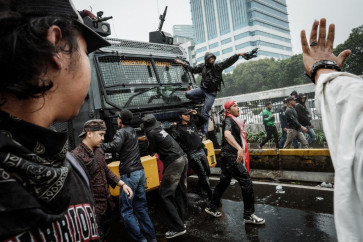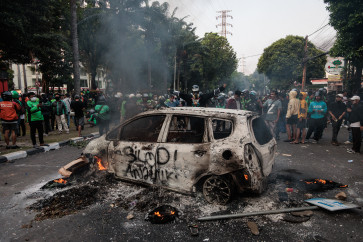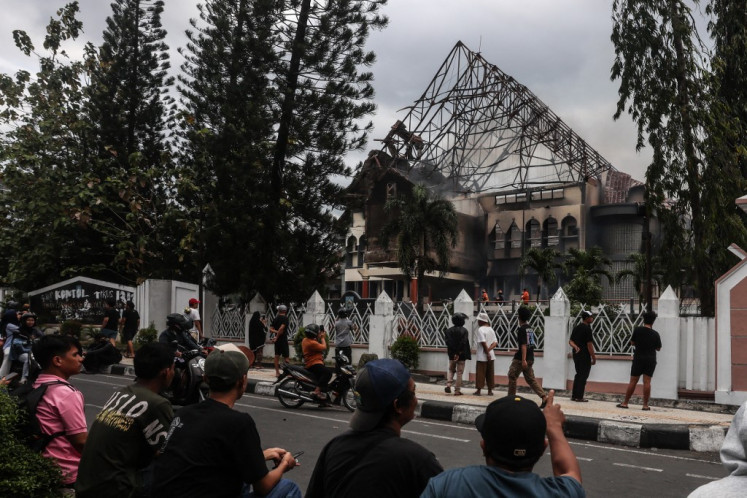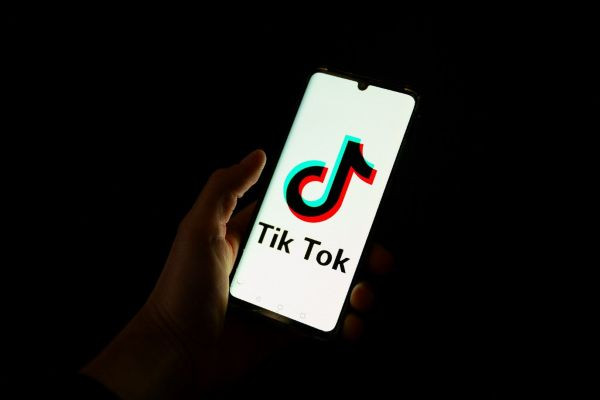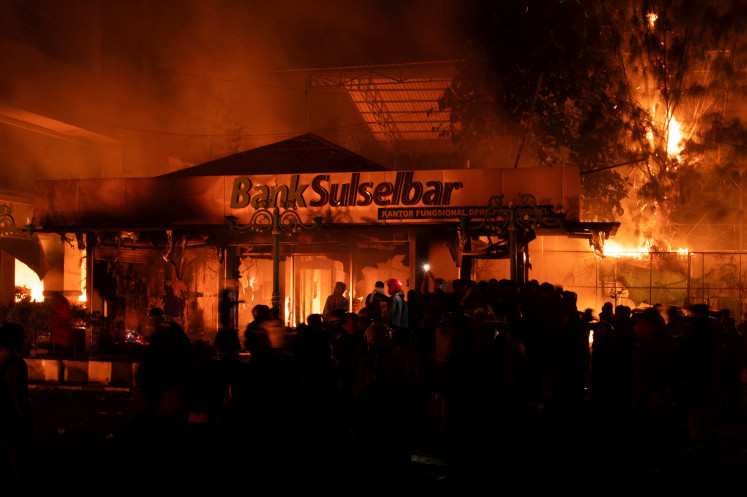Popular Reads
Top Results
Can't find what you're looking for?
View all search resultsPopular Reads
Top Results
Can't find what you're looking for?
View all search resultsJourney continues for RI music after opening of Jakarta vinyl pressing plant
Almost half a century ago, Indonesia shuttered its only vinyl record pressing plant after Lokananta switched to duplicating cassette tapes.
Change text size
Gift Premium Articles
to Anyone
A
lmost half a century ago, Indonesia shuttered its only vinyl record pressing plant after Lokananta (then PN Lokananta) switched to duplicating cassette tapes.
After the plant’s closure, cassette tapes and, later, CDs became the predominant format, and vinyl records were pronounced "dead".
In recent years, vinyl has somehow defied the odds and experienced a resurgence, mostly propelled by younger generations of music enthusiasts who are drawn to its sound quality and artistic appeal.
But for musicians and record labels who want to press their music on wax, releasing records has been a hassle, as they have had to manufacture the product overseas, and with most pressing plants experiencing backlogs, it can take months for the process to be completed.
Those difficulties may now be coming to an end. On Aug. 5, PHR Pressing, a partnership between the record store PHR and the independent music label Elevation Records, officially launched a state-of-the-art pressing plant in Cengkareng, West Jakarta, with the primary aim of breaking the impasse.
PHR Pressing is trying to capitalize on the vinyl boom, which began in the country in the mid aughts.
At the time, independent labels such as Grieve Records, Grimloc and FFWD were among the first to press music on vinyl, including releases by legendary bands Kelelawar Malam, Homicide, The SIGIT and Southern Beach Terror.
The new pressing plant may make pressing records easier for Indonesian groups, but will vinyl revival be sustainable?
Taxman
It may be a while before vinyl mania takes hold among musicians, but so far the response to the new pressing plant has been positive.
Eggi Pradia Wiguna of metal band Viscral told The Jakarta Post that there had been a lot of enthusiasm from local musicians that could help rekindle the passion for vinyl.
"Pop, metal and even punk have all found a home in Indonesia's thriving music scene. A "space" isn't enough for these types of music; instead, they require a fully functional pressing business or record company to promote and distribute their music," Eggi said.
The 34-year-old said some local bands were pressing vinyl records in plants in countries such as Taiwan, the Netherlands and the Czech Republic. But despite the high-quality pressing, the shipping costs and import taxes made the process prohibitively expensive for many local bands.
Eggi is now waiting for a shipment of Viscral's record from PHR Pressing.
PHR Pressing executive director Clement Arnold, who also runs a record label releasing homegrown music on vinyl, said his past experience had shown that dealing with import taxes was the most difficult part, as levies on imported records could be 25 percent of the overall production cost or higher.
"To put it another way, customs agents frequently increase musicians' tax bills. Sometimes a 30 percent, 40 percent or 50 percent surcharge can be imposed. It all depends on the customs officers' approach during processing," Clement said.
"If the tax rate was 25 percent, we might be able to accept it as a reasonable addition to the total and say, ‘Okay, that's still part of the calculation’, but at 40 percent, the inconsistency becomes a significant burden. However, problems occur when the tax rates change unexpectedly."
Responding to the question of tax, Nirwala Dwi Heryanto of the Customs and Excise Office acknowledged that tax officials had the authority to discover or determine the original price of goods brought into Indonesia.
“We are determined to find out what the origins of goods shipped into Indonesia are. For example, vinyl records originating in Singapore and ones from America are not the same,” Nirwala said.
Local content
Given such uncertainty, Clement said that the local pressing plant could be a solution.
Although the vinyl pressing business was still in its infancy, he said, he was optimistic that it would continue to grow over the next five years, with potential customers intrigued by the format and joining the fray.
There are, however, challenges, including the problem of sourcing good-quality PVC, a raw material used in the pressing process, as well as the work of producing stampers to press music on vinyl.
Currently, PHR Pressing imports PVC from a manufacturer in Thailand, which also supplies the raw material for other plants in the world. Indonesia does not have manufacturing facilities capable of producing raw PVC.
And since no domestic outlets can do the job of producing metal masters for vinyl pressing, PHR Pressing is relying on a Dutch studio to manufacture the stamper, or master record.
As for the artwork and raw materials for album covers and sleeves, PHR Pressing uses local talent and vendors.
"It's true that saving time, money and labor that can add up to a significant amount," Clement said.
Music or profit?
Questions remain whether local bands, musicians and labels will release their music on vinyl at all, even given a local pressing plant. Most of the time these players want to make sure they can find an audience for their products.
“The question isn't whether or not we can manufacture this vinyl product; rather, it's whether or not we can sell it afterward, or how the public will respond to our product. Do we need to print more than 300 copies of each album?” Eggi of Viscral said. "That obviously affects the band in terms of whether the band can continue to be active or not.”
And then there's the high price tag of vinyl releases compared to other formats. What consumers pay for the final product is in the hands of record labels, who at times slap high prices on the product. A recent vinyl release by the band Dewa 19 had a price tag of Rp 1,000,000.
At the current market price of Rp 400,000 to Rp 475,000, a local band can still generate a unit profit of more than 200 percent, according to an estimate by Eggi. The cost of pressing a vinyl record offered by PHR Pressing currently ranges from Rp 110,000 to Rp 285,000.
“Compared to other formats, vinyl releases are also the most expensive in terms of price. For the cassette tape format, we can sell it for Rp 25,000 to Rp 40,000. Meanwhile, vinyl can start at Rp 375,000,” Eggi said.
Despite the premium price tag, Clement was optimistic that the market could grow for Indonesian music pressed on vinyl, especially in Southeast Asian countries that shared cultural and linguistic affinities with Indonesia.
"Actually, just yesterday, we launched an album by Gangga and, shockingly, 15 percent of the orders came from Thailand. I didn't expect that at all," he said.



